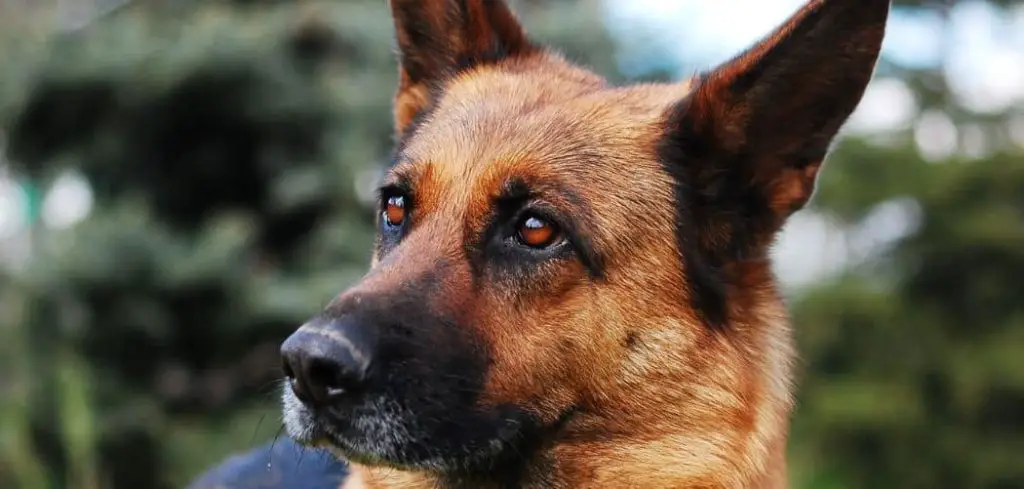If your dog is heaving and not eating, it’s natural to feel alarmed. These symptoms can point to several underlying health issues, some of which require prompt medical attention.
We outline the common causes of dog heaving and not eating, what you can do at home, and when to seek veterinary help.
Dog Heaving and Not Eating — Why It Happens
Heaving combined with a loss of appetite is often a sign of gastrointestinal distress or respiratory trouble. Dogs may also heave due to nausea, toxin ingestion, kennel cough, or abdominal pain.
When they don’t feel well enough to eat, this can indicate the problem is worsening or causing systemic effects. Dehydration, lethargy, or fever may also appear alongside these signs.

Common Causes of Dog Heaving and Not Eating
Gastric Irritation or Gastroenteritis
When a dog’s stomach or intestines are inflamed, they may begin to dry heave or retch without vomiting.
This is especially common if your dog has eaten something inappropriate — like spoiled food, garbage, or a foreign object.
The irritation can reduce appetite and make them feel nauseated. You may also notice diarrhea, burping, or a gurgling stomach.
Kennel Cough or Respiratory Infection
Respiratory issues such as kennel cough, pneumonia, or bronchitis can cause your dog to heave or hack.
These episodes might look like vomiting attempts, but often nothing comes up.
Infections like kennel cough are highly contagious, and affected dogs typically lose their appetite.
Coughing may worsen at night or during excitement.
Read more: Dog Acting Weird and Not Eating (What’s going on?)
Nausea or Toxin Exposure
Dogs exposed to certain toxins, spoiled food, or medications may develop intense nausea, leading to heaving and a refusal to eat.
If you’ve noticed your dog around cleaning supplies, human medications, or houseplants, toxicity should be considered.
Additional signs might include drooling, shaking, or pale gums.
Bloat (Gastric Dilatation-Volvulus)
Bloat is a life-threatening condition where the stomach fills with gas and can twist.
Dogs with bloat often retch or heave but are unable to vomit. They usually appear very uncomfortable, restless, or distended in the belly.
This is an emergency and must be treated immediately.
Pain or Discomfort in the Abdomen
If your dog is suffering from pancreatitis, a blockage, or internal injury, they may heave as a response to abdominal pain.
The discomfort may make them avoid food entirely.
Dogs might also adopt unusual positions like the prayer pose (front end down, rear end up) and show signs of depression or trembling.
Motion Sickness
Heaving and not eating can also occur if your dog has recently been in a car or had vestibular issues.
Motion sickness is especially common in puppies or dogs not used to travel.
It usually resolves within a few hours, but if persistent, it may point to deeper balance or neurological issues.
Read more: Dog Gagging and Not Eating (What it could mean)
What to Do If Your Dog Is Heaving and Not Eating
Start by observing your dog carefully for other symptoms: Are they lethargic? Is there drooling, diarrhea, or a bloated belly?
Make sure they have access to clean water and try offering a bland diet like plain boiled chicken and rice in small amounts.
Avoid giving any human medication or inducing vomiting without veterinary advice. If your dog vomits once but is otherwise alert and playful, you might monitor for 12–24 hours.
But if they continue to heave without improvement, stop eating entirely, or act sick, veterinary care is critical.
Keep your dog calm, limit physical activity, and prevent access to anything they might chew or ingest until you’re sure what’s causing their symptoms.
If you’re unsure about severity, it’s better to be safe and call your vet.
When to Call or Visit Your Vet
You should contact your vet right away if your dog:
Is heaving repeatedly without producing vomit
Has a swollen or hard abdomen
Is weak, lethargic, or unresponsive
Has blood in vomit, stool, or saliva
Refuses food and water for more than 24 hours
Is a puppy, senior, or has chronic illness (they dehydrate faster)
If your dog appears in pain, is drooling excessively, or has trouble breathing, don’t delay.
These symptoms may signal a dangerous condition like bloat, pancreatitis, or poisoning.
Read more: Dog Vomiting and Not Eating (When to worry)
Key Takeaway
Heaving and not eating are serious symptoms in dogs that shouldn’t be ignored. While occasional retching might be harmless, repeated episodes paired with appetite loss can signal something far more concerning. Observe your dog closely, withhold food temporarily, and call your vet if there’s any doubt about the cause or severity. Early intervention can prevent complications and help your dog recover safely.
